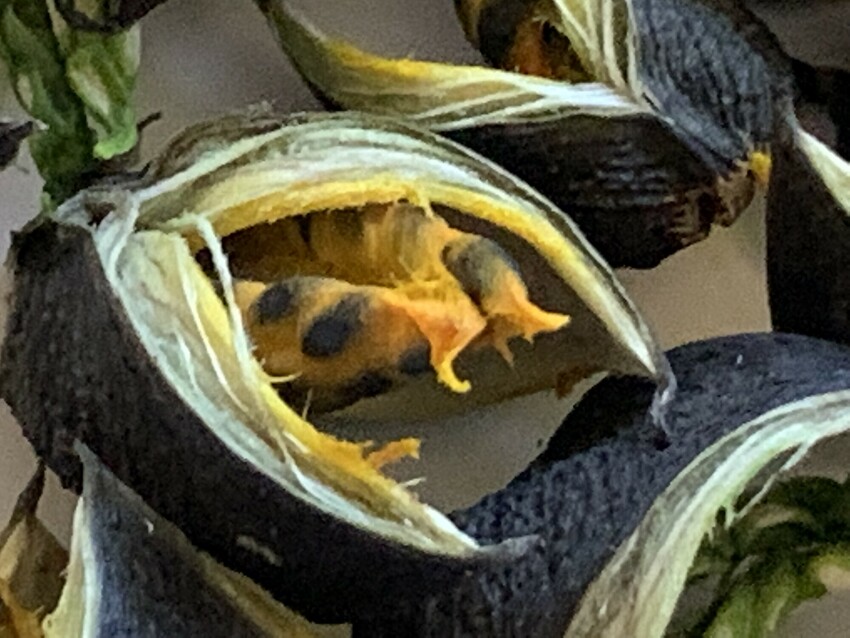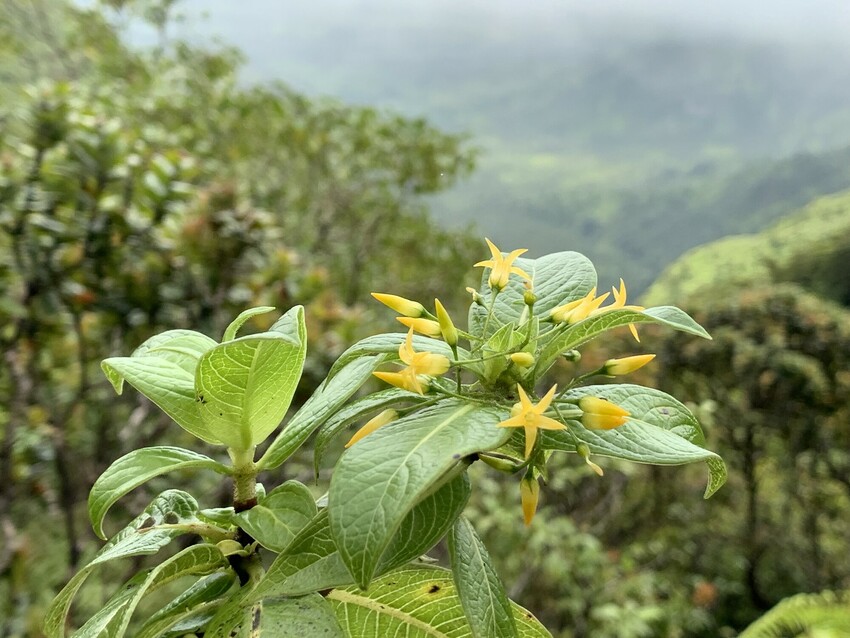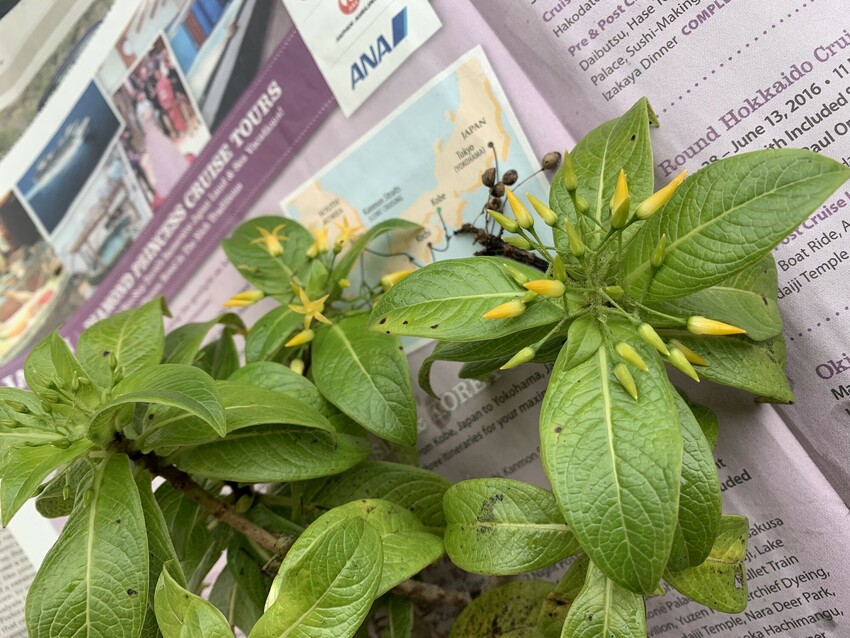by Kenneth R. Wood, Research Biologist
Botanists and enthusiasts of the Hawaiian flora may recognize the genus Geniostoma by its older name, Labordia, or by its melodic Hawaiian name kamakahala. The genus includes Geniostoma helleri, a divinely beautiful and Critically Endangered Kauai endemic tree species in the Logania family. Long ago, the seed of the original founder was likely carried to the Hawaiian Islands by a bird. Over millennia, kamakahala evolved in isolation into a lineage of 19 extraordinarily unique taxa, eight of which are federally listed as endangered, each a masterpiece of evolution.

The conservation of kamakahala can be difficult since plants are either male or female and require the presence of both sexes in the colony. Insect visitation of flowers is also needed for pollen exchange. Where there are highly fragmented and separate individuals, biologists need to gather pollen from males and hand-pollinate the isolated female when she is with receptive flowers.
Over the last few decades, NTBG’s Science and Conservation team has mapped all seven species of kamakahala on Kauai, including over 100 Geniostoma helleri individuals throughout Kokee’s mesic forests and Kauai’s western canyons. This phytogeographical (referring to the geographical distribution of plants) knowledge of distribution and abundance has been fundamental in our conservation efforts, and we are thrilled to report that we have exceeded our expectations for the conservation of G. helleri.
In the spring of 2021, collections were made from five separate female trees, with one of those collections rendering over 1,000 seeds, the total number of seeds collected for this project increased to approximately 2,800. These are by far the best collections we’ve ever acquired from Geniostoma helleri. Portions of seed are being cultivated by NTBG’s Horticulture team, and significant numbers are being preserved in our seed storage facility under the curation of seed bank and laboratory manager Dustin Wolkis.

Another single-island endemic kamakahala on Kauai is Geniostoma lorencianum. In the early 1990s, while searching with entomologists in remote interior canyons for the rare endemic fabulous green sphinx moth (Tinostoma smaragditis), NTBG staff discovered a new species of kamakahala which was described and ultimately named in honor of Dr. David Lorence, NTBG’s senior research botanist.
Only a single colony of this kamakahala species has ever been found, which included three males and one female tree. Lorence’s kamakahala is a wonderful example of inter-agency conservation. The collaborative efforts of NTBG, along with the Kauai Plant Extinction Prevention Program (PEPP), and the Hawaii State Division of Forestry and Wildlife (DOFAW) have resulted in successful seed collections of G. lorencianum, followed by nursery propagation, and finally reintroduction back into the forests where the species was originally discovered. Many dozens now occur in their natural habitat and are protected within a fenced exclosure from goats and pigs. DOFAW has made great efforts to maintain that exclosure.
In Kauai’s rugged, wet windward and northern forests, another extremely rare and strikingly beautiful kamakahala occurs. Named in honor of Reverend John Mortimer Lydgate (1854-1922), Geniostoma lydgatei has exquisitely delicate flowers and the smallest fruit capsules of any kamakahala. Geniostoma lydgatei also occurs in the Upper Limahuli Preserve where NTBG biologists are methodically mapping and monitoring individuals and have been collecting seed for conservation.
During the spring and summer of 2021, PEPP and NTBG have made significant observations of Geniostoma lydgatei in lowland wet ohia forest, but this extraordinary species is still only known from several hundred individuals. NTBG plans to maintain and enhance viable populations of this federally endangered species in the fenced Upper Limahuli Preserve.

Currently NTBG’s director of science and conservation, Dr. Nina Ronsted, has partnered on a National Science Foundation (NSF) grant to study the phylogenetic relationships and diversification of the entire Hawaiian lineage of kamakahala. The grant will also include 11 other Hawaiian plant radiations in need of molecular and taxonomic work. This NSF research is in partnership with Washington University, University of California-Los Angeles, UC-Berkeley, Smithsonian Institution, and involves several NTBG staff who will be collecting and organizing leaf material for the proposed gene sequencing.With approximately 1,300 native plant species, 90 percent of them endemic, the challenge to conserve the Hawaiian flora can be overwhelming. It’s sobering to think that around 30 Hawaiian plant species have gone extinct since 2000, raising the number of extinctions to approximately 130 species of flowering plants and ferns.
This fact should leave us with a deeper appreciation of the need for greater focus and funding to secure and build populations of the Hawaiian flora. NTBG secured a grant to conserve Geniostoma helleri from The Mohamed bin Zayed Species Conservation Fund, but further expansion of horticultural facilities, staff, and increased funding is recommended to successfully manage our endangered plants and forests. Like the concept for the Ark of Noah, we are gathering Hawaii’s rare plants together to be preserved, grown, and planted back into the wild.